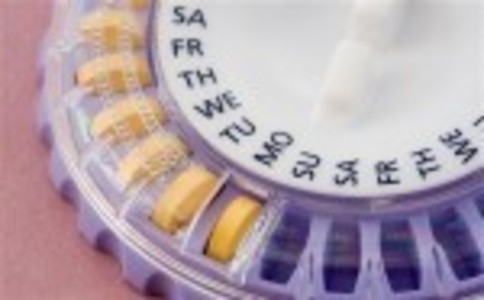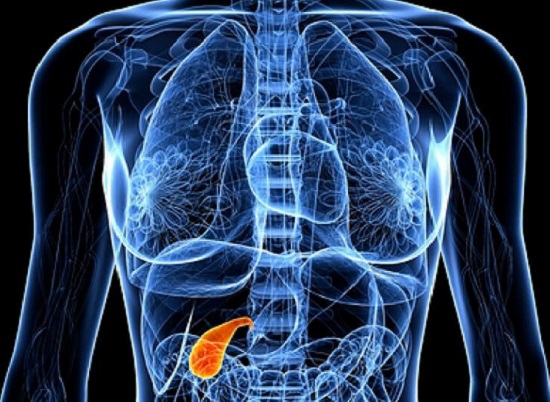Menopause is defined as the time after a woman’s final menstrual period, and is confirmed after one year with no periods. For many women, this is a natural, gradual process, that begins with perimenopause: the four to eight years before the final period. The time through perimenopause, the final menstrual period, and a few years after the final period is known as the menopausal transition. Many women go through this transition naturally as they age, but other women go through induced menopause, caused by surgical removal of the ovaries or cancer treatments.
Symptoms Related to Menopause
The average age of menopause in North America is 51 years, with most women going through menopause between the age of 40 and 58. During the menopausal transition, hormonal changes may result in symptoms that range from mildly bothersome to downright unbearable. Vasomotor symptoms, or hot flashes and night sweats, are one of the main menopause-related symptoms that women seek medical treatment for, and are experienced by about 80% of women during the menopausal transition. Some women also experience vaginal dryness and/or pain with sexual intercourse during menopause.
During perimenopause, many women will start to experience hot flashes and night sweats. Other symptoms of perimenopause include vaginal dryness, irregular periods, sleep problems, mood changes, weight gain, thinning hair, and dry skin (sounds awesome, right?). However, the North American Menopause Society correctly points out that the menopausal transition often coincides with a number of midlife stressors such as relationship issues/divorce, caring for aging parents, career issues, and struggles with adolescents (is anyone else’s hair going grey from teenage daughter stress?). These stressors may also contribute to symptoms a woman experiences at this time.
Hot flashes and night sweats (vasomotor symptoms or VMS) can be troublesome to many women. As with other issues in women’s health, lack of research led to the long held false assumption that these symptoms are generally experienced for only a few years right around the final menstrual period. However, new research has shown that in some women, these symptoms last for a decade or longer. In addition, the pattern of these symptoms, or when they occur relative to the final menstrual period, is not the same in all women.
New Insights into Frequency and Timing of Hot Flashes and Night Sweats
A recent, large study of ethnically diverse women going through natural menopause across the U.S. has provided some new insights into how women experience vasomotor symptoms during menopause and who is at risk for longer lasting or more severe symptoms. This study followed women from 12 years before the final menstrual period to 15 years after. The median duration of vasomotor symptoms was 7.4 years and the median persistence of symptoms after the final period was 4.5 years. In this study, frequent vasomotor symptoms lasting more than seven years occurred in more than 50% of women. Starting to have vasomotor symptoms at a younger age was predictive of having a longer duration of symptoms, and surprisingly, of having a longer persistence of symptoms after the final period.
This study also found that vasomotor symptoms during the menopausal transition fall into four distinct patterns. In about 27% of women, called the early onset, low frequency group, there is a low probability of vasomotor symptoms across the whole menopausal transition, with a slight increase around the time of the final menstrual period. In 26% of women, there was a high frequency of vasomotor symptoms throughout the entire menopausal transition. In the 18% of women who had an early onset, there was a higher frequency of symptoms, which decreased right after the last period. And 29% of women had a late onset of higher frequency symptoms, with a sharp increase just after the final period.
The study also examined whether certain health or lifestyle measures were associated with particular patterns of vasomotor symptoms and some associations were found. Relative to the women in the low frequency group, women with early onset, higher frequency symptoms were older at the final menstrual period, were in poorer health, and were more likely to suffer from depression and anxiety. Women with late onset, higher frequency symptoms were more likely to be African American/black, more likely to be smokers, and less likely to be obese. And women in the high frequency group were more likely to have less education, be in poorer health, have an increased consumption of alcohol, have depression and anxiety, and be African American/black.
These “co-variables” were all independently associated, meaning, for example, that someone with poor physical health, or depression and anxiety, was more likely in this study to be in the early onset, high frequency group, or in the group with high frequency across the whole transition. The other variables did not need to be present in addition, to create the association.
Hormones Levels During the Menopausal Transition
It has generally been thought that declining estrogen levels during the menopausal transition are responsible for vasomotor and other menopausal symptoms. However, not surprisingly, this view is too simplistic. This same study measured the concentrations of one of the major estrogens in the human body, estradiol, throughout the study, and found that estradiol concentrations have four different patterns during this time as well. However, these patterns did not correlate perfectly with the different groupings of vasomotor symptoms.
In general, women with a consistently lower concentrations of estradiol were more likely to have frequent symptoms across the menopausal transition. However, the study also found that fluctuations in estradiol around the time of the final menstrual period may be associated with vasomotor symptoms at this time. A greater rise in follicle-stimulating hormone (FSH) was also associated with a greater likelihood of vasomotor symptoms. The conclusion of the study was that estradiol alone was not solely responsible for vasomotor symptoms; that other hormones varying during this time may also play a role. For example, some adrenal steroid hormones increase transiently during menopause. DHEAS, a steroid hormone that generally declines with age, increases transiently in some women during menopause.
Are Cardiac Risks Related to Vasomotor Symptoms?
After menopause, a women’s risk of certain serious conditions increases, including cardiovascular disease and osteoporosis. Some preliminary results suggest that the pattern of vasomotor symptoms may be correlated to an increased risk for cardiovascular disease. In one study, carotid intima media thickness (IMT) was measured, which can detect the presence of atherosclerotic disease before cardiovascular symptoms appear. Women with early onset vasomotor symptoms had higher IMT compared to women with low frequency of vasomotor symptoms. This could indicate a higher risk of cardiac events for women who fall into this group. In another study, late vasomotor symptoms were found to be associated with an increased risk of major cardiovascular events, stroke, and death from all causes, and this association was not accounted for by other risk factors. However, because of the size of the study, these results are considered preliminary. More research may allow doctors to predict, based on a woman’s pattern of vasomotor symptoms, her risk of cardiac and other serious events, and may allow doctors to direct lifestyle and other early interventions to those most at risk.
Altogether, this research on vasomotor symptoms during the menopausal transition is helpful because it can help women understand what to expect. It may also help guide treatment decisions for women who are seeking treatment for symptoms; for example, if they start having frequent symptoms early, this may be a sign that these symptoms will persist. In addition, if risks for serious health problems are associated with distinct patterns of vasomotor symptoms, again, this information could help guide early interventions, and help women be alert for early warning signs of a problem.














